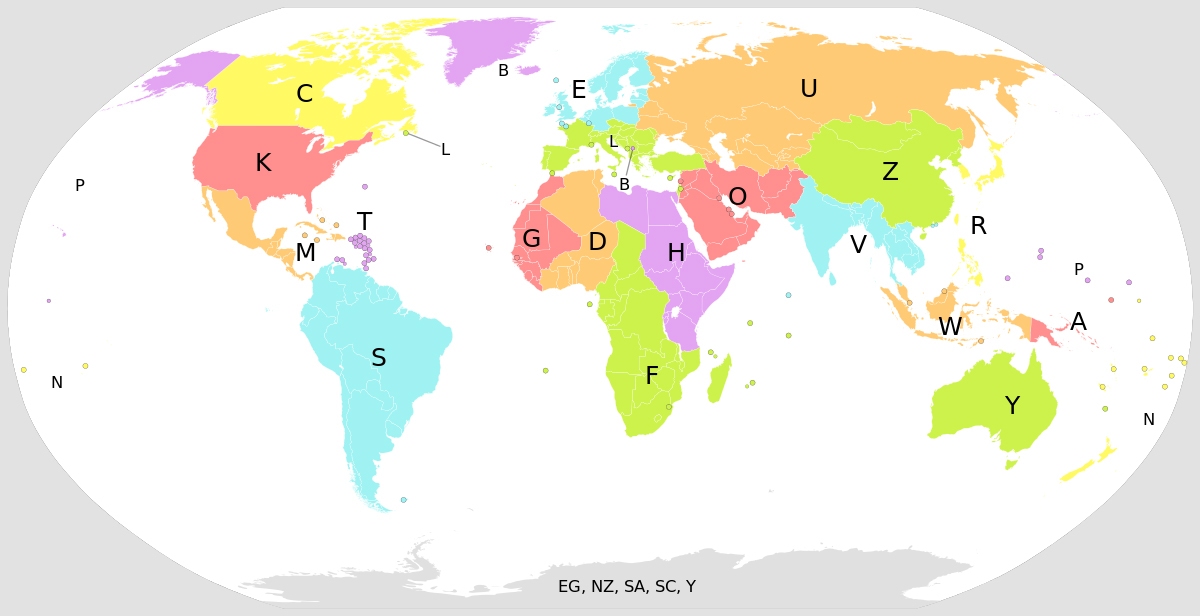Speak Clear English - Enroll Today
english for travel:
Names and codes of major airports around the world
In general, airport codes are made up of three or four-letter acronyms. These letters are valid worldwide and this need for standardization arose years ago. With the end of World War II, the commercial aviation industry experienced rapid development, and it did not take long for governments to realize the need to standardize some acronyms and references worldwide to ensure the compatibility of operations internationally. That was when two major aviation organizations emerged: the International Civil Aviation Organization (ICAO) and the International Air Transport Association (IATA), both based in Montreal, Canada. They play different roles, where ICAO is an international organization allied to the United Nations, while IATA is a trade association that takes care of the interests of the airline sector.
How are Airport codes defined?
With the opening of a new airport, it is necessary to request an IATA code and an ICAO code and each one adopts its own criteria and logic for the definition of these codes. IATA tries to use the first three letters of the city, or the initials of the airport name, whereas ICAO establishes a relationship with the geographical location of the airport.
In the IATA system, codes are usually formed by the first three letters of the city,
The codes designated by IATA usually take the first three letters of the city, as with Miami (MIA), or the initials of the airport name, as is the case with John F. Kennedy (JFK) in New York. In this system, 17,576 possible combinations are possible, but if the intended acronym is already in use, then adjustments begin, which do not always make much sense. At airports in Canada, for example, the two-letter codes that were used before IATA was established were related to the country’s telegraph stations. To make it a three-letter acronym, they added a Y in the front. For example, the Toronto airport has the code YYZ, which isn’t related at all to the city name “Toronto”.
The ICAO system uses a different logic, where the first letter designates a region, the second letter designates a country and the remaining two represent a specific airport. Due to the geographic logic used, this system is used in flight documentation. Thus, for the IATA Dublin and Dubai systems they are (DUB) and (DXB), respectively, and for the ICAO system, it is represented by EIDW and OMDB.
This map illustrates how the ICAO system works:

Search: https://www.melhoresdestinos.com.br/aeroporto-codigo-3-letras.html
For the origin and meaning of the acronyms of all airports, consult Airport Codes. Here are some of the most traveled airports, along with their three-letter acronyms.
AMS – Amsterdam Schiphol International Airport – Haarlemmermeer, Netherlands
ATL – Atlanta International Airport – United States
BOS – Logan International Airport – Boston, United States
BSB – Brasília International Airport – Presidente Juscelino Kubitschek – Distrito Federal, DF, Brazil
CDG – Charles de Gaulle International Airport – Île-de-France, France
CGH – Congonhas Airport – São Paulo, SP, Brazil
CNF – Tancredo Neves / Confins International Airport – Belo Horizonte, MG, Brazil
DEN – Denver International Airport – United States
DFW – Dallas-Fort Worth International Airport – United States
DXB – Dubai International Airport – United Arab Emirates
EZE – Buenos Aires International Airport – Argentina
FRA – Frankfurt International Airport – Germany
GIG – Antonio Carlos Jobim / Galeão International Airport – Rio de Janeiro, RJ, Brazil
GRU – Guarulhos International Airport – São Paulo, SP, Brazil
IAD – Dulles International Airport – Washington, United States
IST – Istanbul Atatürk Airport – Turkey
JFK – John F. Kennedy International Airport – New York, United States
LAX – Los Angeles International Airport – United States
LGW – London Gatwick Airport – England
LHR – Heathrow International Airport – London, England
LIS – Lisbon International Airport – Portugal
MAD – Barajas International Airport – Madrid, Spain
MIA – Miami International Airport – United States
ORD – O’Hare International Airport – Chicago, United States
POA – Salgado Filho International Airport – Porto Alegre, RS, Brazil
SDU – Santos Dumont Airport – Rio de Janeiro, RJ, Brazil
SFO – San Francisco International Airport – United States
SSA – Airport Dep. Luis Eduardo Magalhães – Salvador, BA, Brazil
SYD – Kingsford Smith International Airport – Sydney, Australia
YYZ – Toronto Lester Pearson International Airport – Canada
The next time you travel, pay special attention to the airport codes! They carry very important information about your destination and possible flight connections to your destination.
Now that you know more about the background of the language you are studying, it’s time to get better at speaking English!
Click on one of the following links to start speaking clearer English!
1) CLEAR ENGLISH PRONUNCIATION VIDEO COURSE
2) ENGLISH VOCABULARY – AUDIO FILES & PDF – TOEFL & IELTS
3) IDIOMS IN CONVERSATION
4) JUMPSTART YOUR ENGLISH AUDIOBOOK + EBOOK
Sources:
https://www.teclasap.com.br/aeroporto/
Until next time, Happy Learning!
Speak Clear English - Enroll Today

Jhessika Nascimento
Director of International Partnerships
Jhessika Nascimento is the Director of International Partnerships for Study With Andrea and lives in Brasilia, Brazil.
Jhessika is a bilingual teacher of English and Portuguese, studying for a Master's Degree in Strategic Management in Information Technologies at the Universidad Internacional Iberoamericana.
Graduation in Letters - Portuguese and English.
Postgraduate in Teaching in Higher Education.
Postgraduate in Risk Management and Cybersecurity.
Postgraduate Executive MBA in Process Management BPM-CBOK.
Postgraduate in Translation and Proofreading of Texts in English.
The following is a TOEFL Reading practice test to help you prepare for the Reading section of the TOEFL test.
Instructions: Read the sample passage below and then answer the questions that follow.
TOEFL Reading Practice Passage
Gorillas are ground-dwelling, predominantly herbivorous apes that inhabit the forest of central Sub-Saharan Africa. The genus Gorilla is divided into two species: the eastern gorillas and the western gorillas (both critically endangered), and either four or five subspecies. They are the largest living primates. The DNA of gorillas is highly similar to that of humans, from 95 to 99% depending on what is included, and they are the next closest living relatives to humans after the chimpanzees and bonobos.
Gorillas' natural habitats cover tropical or subtropical forest in Sub-Saharan Africa. Although their range covers a small percentage of Sub-Saharan Africa, gorillas cover a wide range of elevations. The mountain gorilla inhabits the Albertine Rift montane cloud forests of the Virunga Volcanoes, ranging in altitude from 2,200 to 4,300 metres (7,200 to 14,100 ft). Lowland gorillas live in dense forests and lowland swamps and marshes as low as sea level, with western lowland gorillas living in Central West African countries and eastern lowland gorillas living in the Democratic Republic of the Congo near its border with Rwanda.
(#1) Gorillas move around by knuckle-walking, although they sometimes walk upright for short distances, typically while carrying food or in defensive situations. (#2) A 2018 study investigating the hand posture of 77 mountain gorillas at Bwindi Impenetrable National Park (8% of the population) found that knuckle walking was done only 60% of the time, and they also supported their weight on their fists, the backs of their hands/feet, and on their palms/soles (with the digits flexed). (#3) Studies of gorilla handedness have yielded varying results, with some arguing for no preference for either hand, and others right-hand dominance for the general population. (#4)
The eastern gorilla is more darkly colored than the western gorilla, with the mountain gorilla being the darkest of all. The mountain gorilla also has the thickest hair. The western lowland gorilla can be brown or grayish with a reddish forehead. In addition, gorillas that live in lowland forest are more slender and agile than the more bulky mountain gorillas. The eastern gorilla also has a longer face and broader chest than the western gorilla. Like humans, gorillas have individual fingerprints. Their eye color is dark brown, framed by a black ring around the iris. Gorilla facial structure is described as mandibular prognathism, that is, the mandible protrudes farther out than the maxilla. Adult males also have a prominent sagittal crest.
A gorilla's lifespan is normally between 35 and 40 years, although zoo gorillas may live for 50 years or more. Colo, a female western gorilla at the Columbus Zoo and Aquarium, was the oldest known gorilla at 60 years of age when she died on 17 January 2017.
Questions
1. According to the passage, gorillas can live in
a. a variety of altitudes.
b. several different countries in Africa.
c. thick forests.
d. lowland forests only.
2. All of the following is true about gorillas EXCEPT
a. they primarily eat smaller animals.
b. they live in a forest habitat.
c. their genetics are similar to humans.
d. their diet consists of vegetation.
3. Look at the word predominantly in paragraph 1. The word predominantly in this passage refers to
a. impulsively
b. unfortunately
c. mainly
d. lastly
4. Look at the word inhabits in paragraph 2. The word inhabits in this passage refers to
a. lives in
b. protects
c. goes
d. works
5. The author implies that
a. most gorillas prefer using their left hand over their right.
b. gorillas rarely walk on their knuckles.
c. gorillas regularly walk upright for long distances.
d. studies haven't solidly proven which hand gorillas prefer using.
6. Why does the writer mention that the eastern gorilla also has a longer face and broader chest than the western gorilla?
a. To validate the importance a broad chest in western gorillas
b. To define the meaning of "broad"
c. To highlight a physical difference between types of gorillas
d. To demonstrate that most gorillas are identical in physical build
7. Which of the following statements is true for BOTH eastern and western gorillas.
a. Both eastern and western gorrilas are brown with red foreheads.
b. Both eastern and western gorrilas have unique fingerprints.
c. Both eastern and western gorrilas have thin hair.
d. Both eastern and western gorrilas have light brown eyes.
8. In Paragraph 3, look at the four numbers (#1, #2, #3, #4) that indicate where the following sentence would be added to the passage.
Such a range of hand postures was previously thought to have been used by only orangutans.
Where would the sentence best fit?
(View all the correct answers below.)
Great job! If you're ready to take your TOEFL preparation to the next level, go to StudyWithAndrea.com/TOEFL.
Answers: 1. d 2. a 3. c 4. a 5. d 6. c 7. b 8. #3
Click on one of the following links to start speaking clearer English!
1) TOEFL MASTER CLASS
2) free mini-course "punctuation mistakes to avoid"
3) Clear English Pronunciation Video Course
4) English Vocabulary - Audio Files & PDF - TOEFL & IELTS
About Andrea
Andrea Giordano is the founder of StudyWithAndrea.com and has taught more than 1,000,000 students from 180 countries. Andrea holds a Master of Education (TESOL) from Shenandoah University, and is the former Executive Director of TESOL and ESL programs at Campbellsville University. Andrea is a proven leader in online English teaching and is driven by her passion to help you speak English clearly.





